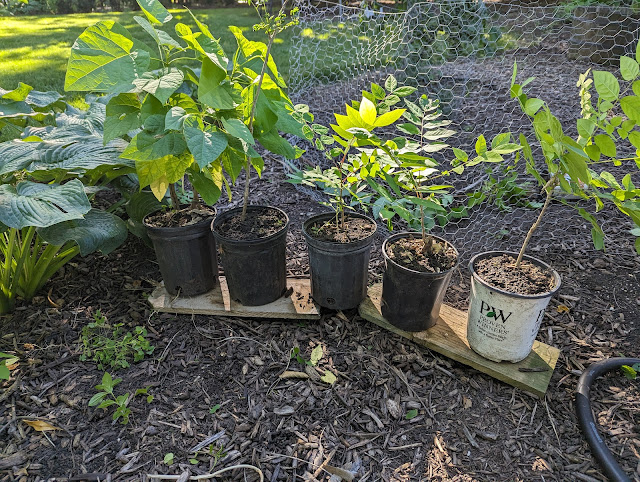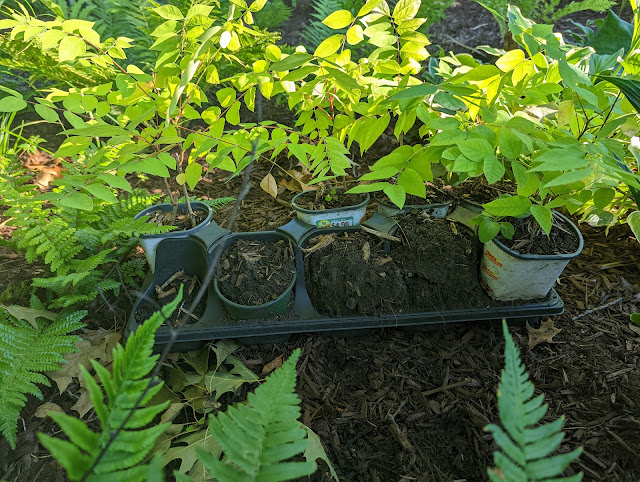Limelight Hydrangea Cutting - Flowering For First Time - August 2024

Back in the late Summer of 2022, I tried to get a couple of flowering shrub cuttings to root. One of them - a Limelight Hydrangea cutting managed to get established that first month and put on some growth . Ever since, I've kept it in a container and somewhat protected - both during Summer (in the shade) and Winter (buried in the ground). Last Fall - October 2023, I upgraded it from a quart nursery container to a one-gallon nursery pot . This year, I put the small container shrub in the shade of the understory bed and mostly neglected it. It put on foliage and then....recently....it put on its first-ever blooms. Four of them. Two opened up, two more on their way. See below for a peek: How nice to find this little treat. Something I've neglected has FOUND A WAY. It does, however, appear to be a little 'leggy', so I'm thinking that I'm going to give it a haircut to bring it down in size and try to stimulate a li...



